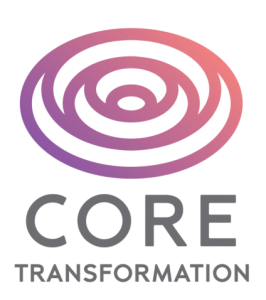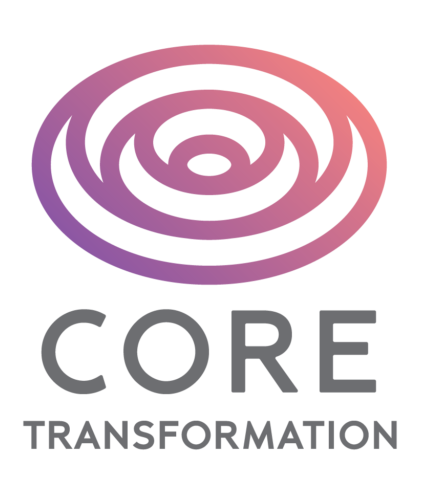Core Transformation and Weight Loss
By Betsy Koos, in collaboration with Tamara Andreas & Connirae Andreas
As a Licensed Psychotherapist (LCSW), I was the Eating Disorder specialist in my community for the past 35 years, working with hundreds of clients presenting with a wide variety of issues around food. In my experience, people with issues around food (and other addictions), come in to Therapy with deep ambivalence, due to wanting to be in control of food/other substance, while feeling an urgency to hold on to using these substances as a deep survival mechanism: as an attempt to meet underlying emotional needs. My primary method of intervention is Core Transformation, because of its effectiveness with a wide range of issues, helping to find other better ways for people to get their needs met, so they do not need to keep using the unwanted behaviors. Here is one example of a weight-loss client.
The Client’s Presenting Problem
“Susie,” a woman in her 60’s, came in for therapy to lose weight, stating she had “tried everything and nothing worked.” She said she was 60 pounds overweight and for the previous 3 months had been working with a Nutritionist in a weekly weight loss group. She was trying to eat the prescribed diet, and exercise regularly, but experienced times of feeling out of control with food. She was having no success losing weight.
What Susie had already tried
Susie reported being depressed and feeling hopeless. She would lose a pound or two in a week, then would gain back more weight than she’d lost. She described having been in long-term counseling 4 different times over the years. She’d learned about her past and understood why she was stuck in her unwanted eating patterns, but had made no progress toward her goal of losing weight. She’d been called a resistant client and was told she was self-sabotaging, which contributed to her feeling like a failure. She had put in a great deal of effort and was understandably discouraged.
Initial Framing
Susie came in saying with a sigh, “I wonder if there is any use even trying anymore.”
I empathized with how difficult it must have been for her to have expended so much effort without results. We all have unwanted thoughts, feelings and behaviors. It is very important to respect these patterns and responses and what they have been trying to do for us. Even the most undesirable behaviors and responses have an underlying purpose and positive intention. I explained to Susie how it is so useful to learn to work with these aspects of herself, which in Core Transformation we refer to as “parts.” We agreed to focus on Susie creating other choices that would better meet her needs and enable her to reach her weight loss goals.
What was in the way of change?
Susie shared that in her current relationships with friends and family, she was in the role of “being there for others and putting their needs first.” As a child, she had been the dependable one in the family. Her father was always at work and her mother was emotionally unstable. She became the caretaker to her younger brother, as a way to feel she belonged in her family. She turned to food as her way of coping emotionally. Food was the only “safe” way she gave to herself. This pattern continued throughout her life, despite all her attempts to change it.
Susie’s motivation for change
I routinely ask clients about their motivation to take on the challenges of making changes. What was the driving force that got Susie to pick up the phone and make an appointment to give it “one more try”? She hoped to lose weight before a planned vacation with her brother, who had always been critical of her being overweight. Susie wanted to improve her relationship with her brother instead of dreading being with him. She also wanted to create physical and emotional health and wellbeing for herself.
Choosing Parts to work with
Knowing Susie’s motivation, I asked her: “Since you know you want to lose weight prior to the vacation, what stops you from doing what you want to do?” She replied that she has no way to express her anger, despite her resentment toward her brother for all she had given up for him. She used food to stuff her anger and resentment: “With everything I have given up, at least I deserve to be able to eat what I want.” Susie’s conflicting parts guided me to interventions with Core Transformation.
With Core Transformation nothing is “resistance” and she wouldn’t need to feel like a failure. Everything in Susie’s experience that relates to her eating when she didn’t want to, can be included in the process. This article won’t teach you the full CT process, but I want to give you a glimpse of how this played out in my work with Susie.
The next step with Core Transformation is to find the inner “parts” that are causing the over-weight. As I’ll soon explain, we found several inner “parts” that were key to Susie’s making the changes that she wanted.
Susie’s response already let me know of parts that were sure to be key in helping her finally resolve this issue. She described a part “that eats food to meet my emotional needs.” I chose to begin using Core Transformation with this part.
The Core Transformation process gives us a carefully designed series of questions that uncover the deeper goals that our inner parts want. Using this line of questioning, we discovered that the part of her that drove her to use food to meet emotional needs was attempting to get a sense of ”Comfort.” Through Comfort, this part of her wanted “Acceptance and Belonging.” Through this, it wanted to “Feel Safe,” and through feeling safe, this brought her a sense of “Deep Peace.” This “Deep Peace” was the resource that transformed the experience of this part of herself. (For more information about the Core Transformation process, and what we mean by a “part,” here’s a free webinar that teaches the basics of the process.)
In the session, we just had time to work with one part related to Susie’s issue. I knew there would be more, and looked forward to assisting Susie in transforming the next parts involved. We did this in a series of sessions. Each inner part that’s transformed makes it easier to find and transform/heal the next part.
The second session, Susie reported feeling less cravings for food and was able to cut back on the number of times she overate during the week. However, she said she was still not losing weight. I asked her what she thought was contributing to holding onto weight? In a moment of personal revelation, Susie exclaimed “it is a way to protect myself and be free to be myself.” The part that got in the way was the need to be the dependable one for others.
This part became the focus of our second session with Core Transformation. We began by eliciting the experience of a time when she felt compelled to put others’ needs before her own, and then uncovering the deeper needs of this part. This part had been trying to help her “Avoid Blame/Be Accepted,” in order to feel a “Sense of Belonging,” bringing her “Love and Feelings of Self-worth.” This part’s deepest goal was a “Sense of Peace.” She recognized that this pattern was created when she was 4 years old. When she invited “Peace” into her experience at the age of 4, she found a deep sense of healing and transformation.
In our third session, she reported feeling more open in her interactions with others, while experiencing less fear of judgment. This was progress, but still something was triggering her overeating. We identified one more part to work with: In times of stress, she tells herself: “I never do anything right.” After guiding her into a recent experience of this, we discovered the part was trying to get a “Sense of Acceptance” in order to feel a “Sense of OKness,” thereby bringing “Peace.”
Susie and I had several additional sessions. Each time we used Core Transformation with another part, and each time Susie’s experience of the process became richer, deeper, and more transformative. Having the deep Core State experience of Peace allowed her to release unwanted feelings and generate new desired behaviors.
The results and improvements
We checked in by phone one month after our last session. Susie and her brother had gone on their vacation. She reported very positive interactions with him. Susie said she was able to express herself for the first time, finding ways to get her own needs met. She was also more confident speaking with others, had choices about what she eats and was losing weight consistently: 2 pounds a week for 5 weeks, something she had not experienced before.
While we began our work focusing on issues of weight loss, through Core Transformation, Susie got a lot more. She learned to set boundaries, began to confidently advocate for herself, and experienced being “OK.” From her newfound sense of peace and wellbeing, Susie then made her desired behavioral changes. Eating was no longer her primary coping strategy, and she was experiencing a consistent weight reduction. Often people’s presenting problems are wonderful gateways to deeper change and inner healing.
Common patterns
Each person has unique qualities, strengths and self-limiting patterns. At the same time, a common theme has emerged in my work with people with over-eating issues: that is, assuming the role of Caretaker/People Pleaser. Many of the clients I’ve worked with learned at a very young age to take care of family members as their best attempt to get their own needs met. Food became the safest way to meet their own emotional needs. This sets the stage for their adult relationships: they work hard to meet other’s needs at the expense of their own.
However, it can be helpful to realize that when using CT as the primary transformation method, it doesn’t actually matter what led to the client’s issues historically. We can even make the needed changes without understanding the root causes. This is because we discover the “parts” that are active and causing the client’s issues right now. However, frequently in the process of the healing transformation, the person does become aware of incidents from childhood or from the past that were formative. And it can provide some satisfaction for the client to realize these things as the old patterns are released.
Using CT it’s possible to help clients transform their weight loss issues, whatever the historical cause may have been.
About the Authors:
Betsy Koos has been a Licensed Psychotherapist for 40 years, working with literally thousands of individuals, families and couples. She has used Core Transformation, NLP and other tools throughout her career. She has been very successful helping clients who have been in other therapies without change. Her clients often report that they have reached their goals, as well as experienced deep and generative change.
Tamara Andreas is co-author of the book, Core Transformation: Reaching the Wellspring Within. She designs and teaches Core Transformation Trainings at all levels, including the Core Transformation Coach Certification Training in partnership with Mark Andreas.
Connirae Andreas is developer of the Core Transformation method, and primary co-author of the book, Core Transformation: Reaching the Wellspring Within.
Contribution of each author:
Betsy Koos is the therapist for this case study, and she wrote the initial draft of this article. Tamara Andreas collaborated with Betsy on creating a complete written account, and Connirae Andreas added final editing notes.

